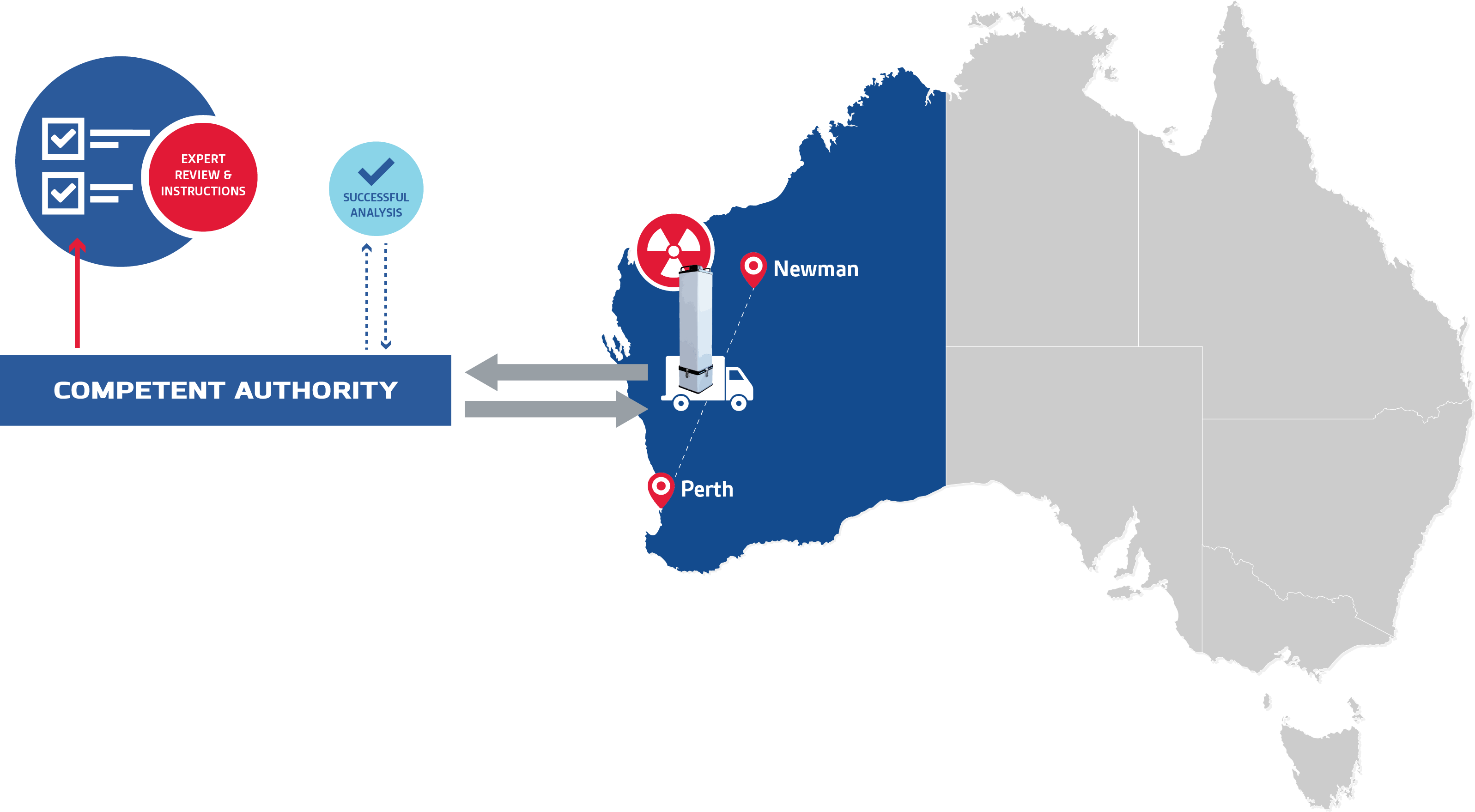Public Alert Issued on January 27th
By the end of January worldwide acknowledge newspapers and broadcasters have been reporting a small capsule containing a small quantity of radioactive Caesium-137 gone missing during a transportation from the town of Newman to the northeastern suburbs of Perth, in Western Australia region, on January 12th.
Australian authorities convoqued an emergency conference to alert the general public that the capsule had disappeared during the 1400km journey that started on the Rio Tinto mine and took several days.
Australians scour desert for dangerous radioactive capsule smaller than a penny
The device, part of a sensor used in mining, is believed to have fallen off the back of a truck while in transit.
Search underway for missing radioactive capsule in Western Australia
Officials have warned the public of the risks in touching a small capsule containing a radioactive substance that was lost during transportation in Western Australia.
Search stepped up for potentially deadly radioactive capsule lost in Western Australia
Authorities have conceded the capsule of highly radioactive material may never be found after disappearing on a 1,400km journey
Rio Tinto apologises for losing radioactive capsule in Australia
Mining giant Rio Tinto has apologised for losing a tiny radioactive capsule that went missing as it was being transported across Western Australia.
Capsule Found on February 1st
How a tiny radioactive capsule was found in Australia’s vast outback
(…) the government revealed the capsule had been found just two metres off the side of the highway at 11:13 local time Wednesday, it seemed the all-but-impossible had been achieved. Authorities said search crews had “quite literally found the needle in the haystack”.
Local media reported that radiation portal monitors and a gamma-ray spectrometer were among the new items being used by search crews.
Radiation portal monitors detect gamma radiation and are typically used at airports to scan individuals to ensure they do not have radioactive substances on them. Gamma spectrometers measure the intensity of the radiation.
Mr Ray said the new detection equipment could be attached to vehicles so searches could be done from moving vehicles at about 50km/h.
How Could Environics Solutions Assist in Such Incident?
This incident works as a perfect example how Environics Ranid product family — for instance RanidPort Solutions — could be utilized in the mission of locating the lost radioactive sources.
RanidPort Solutions consist of spectroscopic radiation portals for radiation monitoring in fixed and mobile use. These have a high volume NaI(Tl) scintillation detector, with rapid detection and identification capabilities, in presence of radioactivity or radioactive material. For this specific case, RanidPort Mobile would be the best fit, since it was designed for mobile use, for instance on a car, for carefully surveying the long path done by the truck where the capsule was formerly loaded.
Due to Environics unique reachback concept, the car carrying the RanidPort mobile during the search wouldn’t even need to carry radiation experts on board, as all the collected data could be shared in real-time to competent authority data analysing centres.

RanidPort Mobile features wireless connection, integrated GPS and mapping function, and is compatible with vehicle power systems. Data communication and reachback capability is always available allowing for constant contact with control centre experts. The measurement data can be sent in-real time for more in-depth analysis for threat verification / location.
